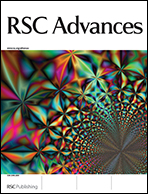Ab initio MCSCF study on several azide molecules: energy component analysis of the pseudo-Jahn–Teller effect
Abstract
An exploration of the most stable geometrical structures for the azide molecules R–N3 (R = H, BeH, BH2, CH3, C6H5) has been carried out by using the ab initio multi-configuration self-consistent field (MCSCF) method together with the aug-cc-pVTZ basis sets. The unknown hydridoberyllium azide (R = BeH) is predicted to suffer no pseudo-Jahn–Teller (JT) distortion and, hence, to assume a linear structure of C∞v symmetry. In contrast, each of the others is found to adopt a trans bent Cs structure with regard to an interior NN bond. To elucidate the nature of the pseudo-JT distortions, energy component analyses have been carried out at all of the stationary points for the relevant molecules. The results show that pseudo-JT stabilizations are classified into two groups, one in which the stability of the bent structure about the azido group arises from lowering of the interelectronic and internuclear repulsion energies and the other in which the stability results from lowering of the electron-nuclear attraction energy. These energy behaviors are accounted for in terms of an elongation or a contraction of the heavy-atom skeleton and a charge migration from some part of the molecule to the other ones. Moreover, it is shown that the theoretical structural characteristics for the known molecules are in good agreement with available experimental facts.


 Please wait while we load your content...
Please wait while we load your content...